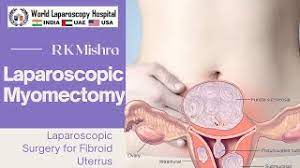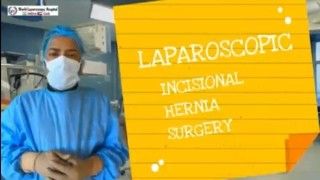Laparoscopic Appendicectomy by Mishra's Knot
Add to
Share
254 views
Report
2 months ago
Description
Laparoscopic appendicectomy has become the gold standard for managing acute appendicitis due to its minimal invasiveness, faster recovery, and reduced post-operative complications compared to open surgery. Among the various techniques for securing the appendiceal stump, Mishra's Knot has emerged as a safe, efficient, and cost-effective method in laparoscopic appendicectomy. Introduction: Acute appendicitis is one of the most common surgical emergencies worldwide. Laparoscopic appendicectomy offers the advantages of reduced post-operative pain, early mobilization, better cosmetic results, and shorter hospital stay. Securing the appendiceal stump is a crucial step, as inadequate closure can lead to post-operative complications such as stump leakage, abscess, or peritonitis. Mishra's Knot Technique: Dr. R. K. Mishra popularized a knotting technique that simplifies appendiceal stump ligation during laparoscopic appendicectomy. This technique avoids expensive endoloops or staplers, making it particularly useful in resource-limited settings. Steps of the Procedure: Port Placement: A standard three-port technique is used: one umbilical port for the laparoscope, and two working ports in the left lower abdomen and suprapubic region. Identification and Mobilization of Appendix: The appendix is identified, and mesoappendix is carefully dissected using energy devices or bipolar cautery. Mesoappendix Division: The mesoappendix is divided close to the base of the appendix while preserving the surrounding bowel and cecum. Application of Mishra's Knot: A long suture is passed through the appendiceal base. A sliding knot is fashioned extracorporeally or intracorporeally. The knot is securely tightened around the appendiceal base, ensuring a snug fit without tissue damage. The appendix is then divided distal to the knot. Specimen Retrieval: The appendix is removed through the port using an endobag to prevent port-site infection. Final Inspection: The appendiceal stump is inspected for hemostasis and secure closure. Irrigation is performed if needed, and ports are closed. Advantages of Mishra's Knot: Cost-effective: Eliminates the need for staplers or preformed endoloops. Safe and Secure: Provides reliable closure of the appendiceal stump. Versatile: Can be applied even in cases of inflamed or friable appendix. Reduced Operative Time: After initial learning, the knotting is quick and efficient. Postoperative Care: Patients typically resume oral intake within a few hours and can be discharged within 24–48 hours, depending on the severity of appendicitis and individual recovery. Follow-up is usually scheduled in 7–10 days. Conclusion: Laparoscopic appendicectomy using Mishra's Knot combines the benefits of minimally invasive surgery with a safe and cost-effective stump closure technique. It is particularly advantageous in low-resource settings while maintaining excellent outcomes and minimizing postoperative complications.
Similar Videos






